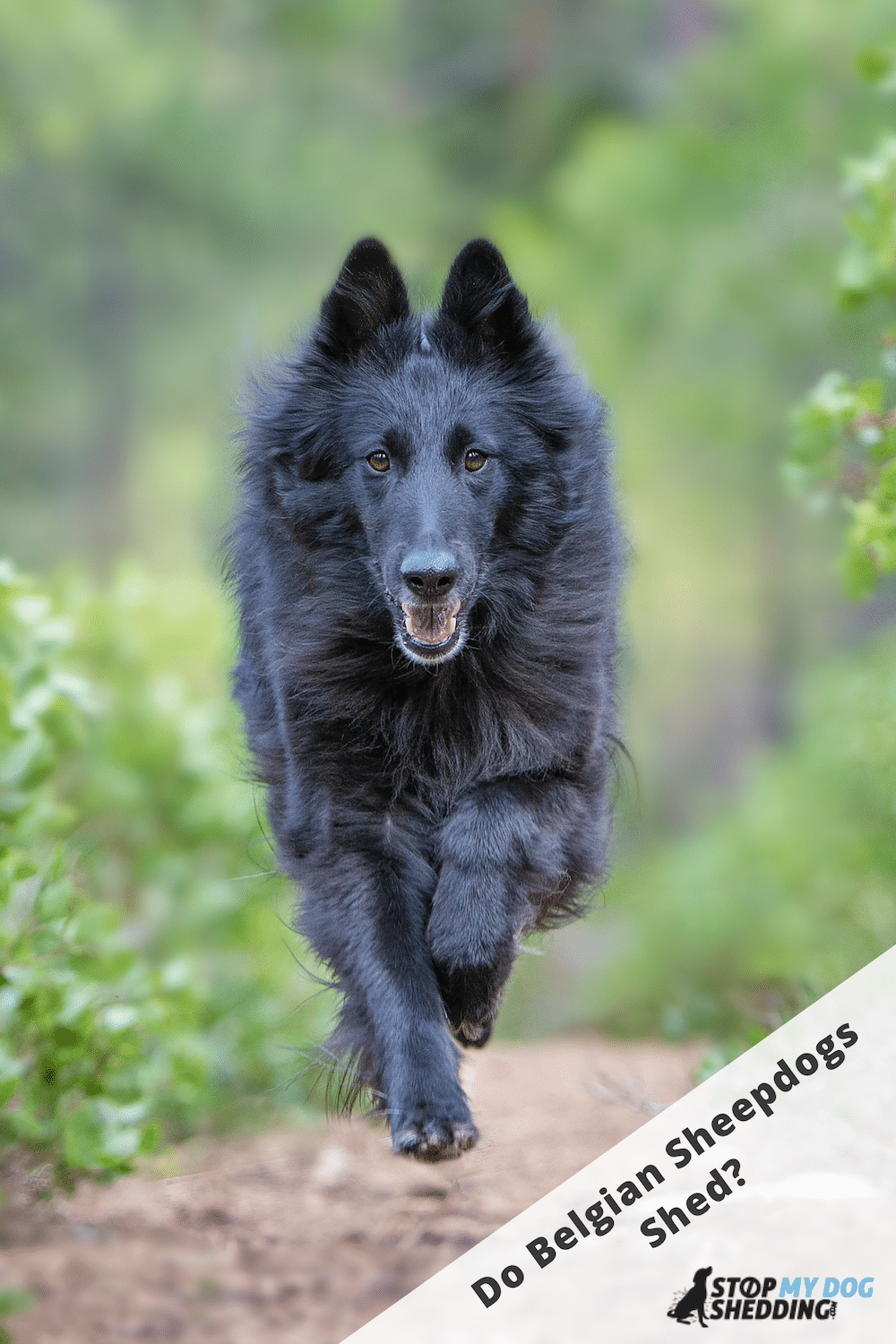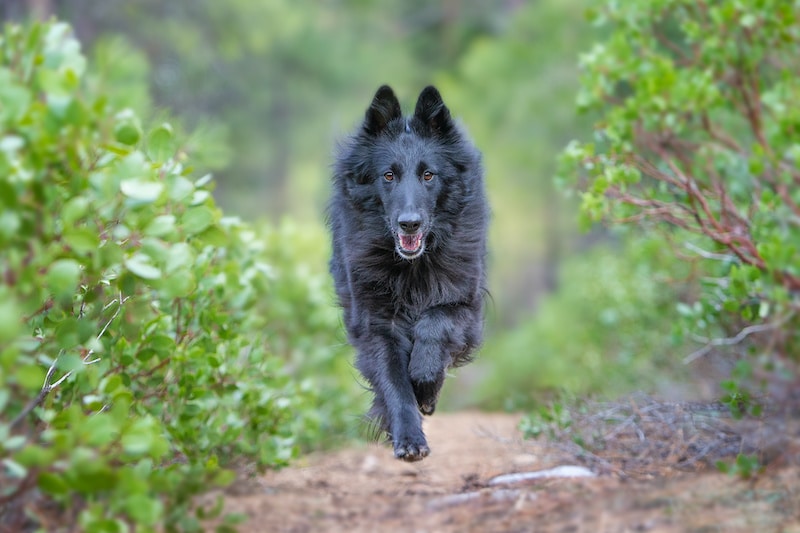Belgian Sheepdogs (or Belgian Shepherds) are large working dogs that originate from Belgium, where they were commonly used to herd sheep.
Over the years ,however, these intelligent, versatile dogs have also been used as police dogs, messengers ,and even helped soldiers in the military.
Safe to say, few dogs can match his work ethic, trainability ,and loyalty.
Do they shed lots? Belgian Sheepdogs have a double coat that is made up of long, harsh outer guard hairs and a short, dense undercoat. He sheds moderately throughout most of the year but quite heavily once or twice a year due to seasonal shedding.
In this article, we’ll explore just how much Belgian Shepherds molt and some of the most effective ways to manage the shedding.
Recommended: Go here to see our top-rated dog hair blow dryers
Belgian Sheepdog Shedding
Belgian Sheepdogs shed moderately throughout most of the year and heavily during one or two seasonal “coat blows.”
This is known as seasonal shedding, which is something most dogs do, and it’s especially noticeable in dogs with thick, double coats as the Belgian has.
This excess shedding occurs because the dog is naturally adapting to the change of season. And it normally happens once in spring and again in fall and lasts for a period of two-to-four weeks. But it does depend on the breed and where they are located as to how often and how noticeable the shedding is.
Either way, you shouldn’t be surprised to notice a fair amount of fur falling off his coat once or twice per year. And you’ll generally notice a moderate amount of fur gathering around the home outside of shedding season. Similar to the amount of fur a Belgian Malinois sheds.
Which, by the way, is a very similar breed to the Belgian Sheepdog, to the point they are classified as the same breed in some countries. However, according to the American Kennel Club, Belgian Sheepdogs are a separate and unique breed. And while they do share many similarities, the Belgian Malinois has a shorter coat that doesn’t shed as heavily overall.
In any case, overall, Belgian Sheepdogs are probably not ideal if you’re looking for a low-shedding dog, there are more suitable breeds in this respect. But with proper brushing, along with ensuring his diet is optimal, it’s not difficult to manage the molting.
Grooming Your Belgian
Belgians don’t have the lowest maintenance coat in dogdom, but at the same time, they don’t require any special grooming like some dogs.
Overall, they have an average maintenance coat.
When it comes to grooming, the first thing you need to understand is that Belgians are double-coated. Meaning that instead of having just one layer of fur, like a Boxer for example, they have two layers of fur. Both an outer coat and an undercoat.
The outer coat is made up of long, straight guard hairs that are harsh in texture and come in a variety of colors. While the undercoat is short and dense, and he needs this as it helps insulate him from both hot and cold weather.
Together, this coat requires more effort to brush than a dog with a short, single coat. Because longer hairs are prone to matting and tangles, especially if he goes out in the field to work or play a lot. So these need to be carefully brushed out to avoid causing your dog pain and discomfort. And second, undercoats result in higher levels of shedding and you will need a brush designed to reach the undercoat, in order to remove that fur.
What brush you use is up to you, but generally speaking, a pin or slicker brush and metal comb work well to maintain his coat, keep it mat free and remove any dead hairs. And brushing once or twice a week for 20 minutes should be all it takes.
However, during shedding season, it’s a different story.
Daily brushing is needed if you want to keep as much of his fur from falling off onto your floors and furniture as possible. And, while not necessary, a deshedding brush or undercoat rake can make your job a little easier and less time consuming during these times.
Other than brushing, maintaining his coat mostly comes down to bathing occasionally and with a good quality dog shampoo that moisturizes his coat.
Recommended: Go here to see our top-rated dog hair blow dryers
Reducing Excessive Shedding
You can’t actually stop a dog from shedding. This is a normal, natural process whereby he is shedding (or molting) his old hairs which are then replaced with new ones.
So, short of removing his hair completely, there’s no getting around this. And incase you’re wondering, shaving him down to the skin is NOT a good idea unless your vet specifically recommends doing so. Because Belgians need their undercoat, it helps insulate them in both warm and cool weather, and having hair protects them from things like sunburn.
The best thing to do is learn how to manage the shedding. Which mostly comes down to common sense things like making sure his diet is optimal and that you brush him regularly.
The reason it’s important to ensure his diet is optimal is that this is naturally going to lead to a healthier dog, with a healthier coat, which in turn sheds less.
So it’s worth taking the time to select the right type of food for your dog, one of a high quality that contains the right amount of vitamins, minerals, and overall nutrition. And preferably one that contains things like Omega-3 fatty acids.
Once you have their diet in order, proper grooming is your best defense against shedding. Because it removes the old fur from the dog before it has a chance to drop onto your floor and upholstery and massages his skin which helps promote an optimal coat.
There are some other effective ways to limit shedding, but these are probably the most important. And while simple, if you get these right you are going to be spending a lot less time vacuuming than if you neglected these.
Bottom Line
Belgian Shepherds are known for their high level of intelligence, similar to other herding breeds like the Border Collie or Australian Shepherd. And they are incredibly loyal, hard-working, and love human companionship.
So if you don’t mind the heavy shedding once or twice per year, you will find that it’s not difficult to manage and keep your home relatively fur-free most of the time.
There are certainly heavier shedding dogs out there, like the German Shepherd, for example, but if you’re looking for a low shedding dog, and one that’s generally more suitable for people with allergies, then breeds like the Giant Schnauzer or Welsh Terrier are worth considering.













Please note: By submitting a comment using the above comment form, you confirm that you agree with the storage and handling of your data by this site as detailed in our Privacy Policy.